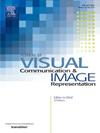Dynamic gesture recognition using 3D central difference separable residual LSTM coordinate attention networks
IF 2.6
4区 计算机科学
Q2 COMPUTER SCIENCE, INFORMATION SYSTEMS
Journal of Visual Communication and Image Representation
Pub Date : 2024-12-17
DOI:10.1016/j.jvcir.2024.104364
引用次数: 0
Abstract
The area of human–computer interaction has generated considerable interest in dynamic gesture recognition. However, the intrinsic qualities of the gestures themselves, including their flexibility and spatial scale, as well as external factors such as lighting and background, have impeded the improvement of recognition accuracy. To address this, we present a novel end-to-end recognition network named 3D Central Difference Separable Residual Long Short-Term Memory (LSTM) Coordinate Attention (3D CRLCA) in this paper. The network is composed of three components: (1) 3D Central Difference Separable Convolution (3D CDSC), (2) a residual module to enhance the network’s capability to distinguish between categories, and (3) an LSTM-Coordinate Attention (LSTM-CA) module to direct the network’s attention to the gesture region and its temporal and spatial characteristics. Our experiments using the ChaLearn Large-scale Gesture Recognition Dataset (IsoGD) and IPN datasets demonstrate the effectiveness of our approach, surpassing other existing methods.
基于三维中心差可分离残差LSTM坐标注意网络的动态手势识别
人机交互领域对动态手势识别产生了相当大的兴趣。然而,手势本身的内在特性,包括其灵活性和空间尺度,以及外部因素,如照明和背景,阻碍了识别精度的提高。为了解决这一问题,本文提出了一种新的端到端识别网络——三维中心差异可分离残余长短期记忆(LSTM)坐标注意(3D CRLCA)。该网络由三个部分组成:(1)3D中心差分可分离卷积(3D CDSC),(2)残差模块增强网络的类别区分能力,(3)lstm -坐标注意(LSTM-CA)模块将网络的注意力引导到手势区域及其时空特征上。我们使用ChaLearn大规模手势识别数据集(IsoGD)和IPN数据集的实验证明了我们方法的有效性,超越了其他现有方法。
本文章由计算机程序翻译,如有差异,请以英文原文为准。
求助全文
约1分钟内获得全文
求助全文
来源期刊

Journal of Visual Communication and Image Representation
工程技术-计算机:软件工程
CiteScore
5.40
自引率
11.50%
发文量
188
审稿时长
9.9 months
期刊介绍:
The Journal of Visual Communication and Image Representation publishes papers on state-of-the-art visual communication and image representation, with emphasis on novel technologies and theoretical work in this multidisciplinary area of pure and applied research. The field of visual communication and image representation is considered in its broadest sense and covers both digital and analog aspects as well as processing and communication in biological visual systems.
 求助内容:
求助内容: 应助结果提醒方式:
应助结果提醒方式:


